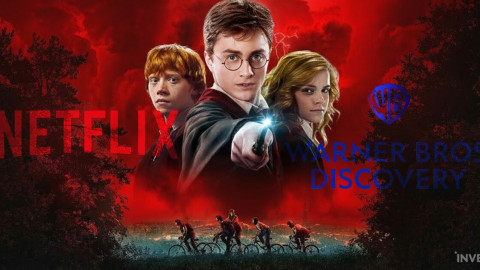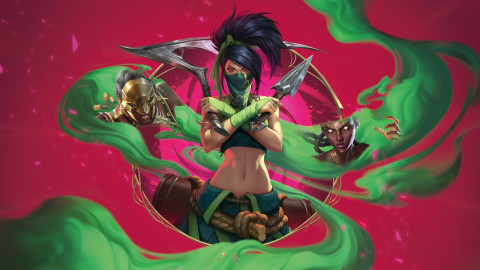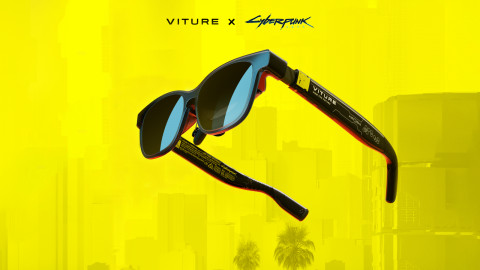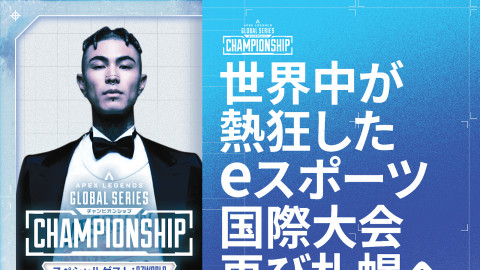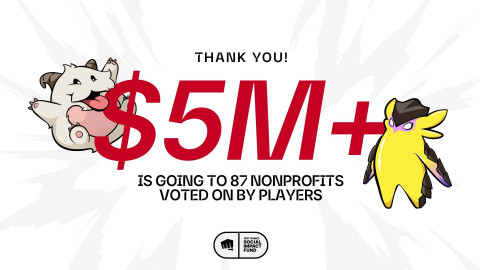
Last October, Riot Games hosted a 10 year anniversary event to celebrate League of Legends’ 10th anniversary. Not only did the 10 new titles that Riot Games announced garner much attention worldwide, so did the many changes that was in store of the Summoner’s Rift for the 2020 season.
Approximately 3 months later, Inven had a chance to get in touch with the Executive Producer of Riot Games, Jessica Nam. As a producer that’s been on board at Riot since Season 2, she was recently in charge of releasing TFT, the collaboration with Louis Vuitton, True Damage, and the most recent addition to the Summoner’s Rift, Sett.
Through this interview, not only did Jessica Nam answer questions about in-game balance patches, champions and skins, she also talked about Wild Rift (the mobile version of LoL), TFT mobile, and the synergy between LoL and the new IT technologies. Finally, she also talked about the next 10 years in Riot Games’ roadmap.
It’s been three months since you’ve revealed a handful of different genre games at the 10 Year Anniversary. Apart from LoR(OBT coming soon) and Wild Rift(slated to launch late this year), when can we expect to hear more about the esports manager game and projects A/L/F? Could you share how far they are in the making?
LoR is launching in open beta starting January 24th! As for the other games, we’re not ready to talk about them just yet, but you’ll learn more soon.
Wild Rift’s biggest rival must be Honor of Kings(a.k.a. Penta Storm in KR). Apart from Riot’s relationship with Tencent, what are the differences between the two games and what advantages does Wild Rift have over Honor of kings? Also, do you think Wild Rift can take the no.1 spot in mobile MOBA?
We think that there are a ton of cool things that other mobile MOBAs brought to the genre, but at Riot we're focused on creating a great game for League players, and we want to keep improving on what's already great about the genre - competitive fun, teamplay and mastery, and finally bringing the world of League to new platforms.
Something we've really tried to preserve and enhance with Wild Rift is this idea of "League Moments": those heartpumping moments of outplay or strategy that really feel like you earned them by your own merit. We think it's important to make something that feels authentic and true to the League experience, so we've retained League PC champion kits with a couple of tweaks for new controls, and you can expect all the phases you'd expect from League on PC - laning, jungling, teamfights, backdoors, Baron steals, and so on.

Sett, 2020’s first new champion, seems a step away from the other newest additions to League. It looks like an easier-to-play champion compared to the others, which tended to be much more difficult and skill-based. How did the initial brainstorming for Sett go, and what did the process look like until the final product?
That’s right - Sett was an exercise in exploring a more mechanically straightforward Champion. We value Champion diversity--including diversity in difficulty--because it results in a broader set of thematic and gameplay experiences players can choose from to enjoy. From a principles standpoint, we always want good options for players who want to pick League up, or for players new to the position. Given that, we wanted to build off a theme that was already well understood and loved in the broader gaming community, but wasn’t yet explored in League. Sett being League’s take on the iconic grappler fantasy, coupled with his hard crime boss with a soft heart personality, is the result of us joining our design, art and thematic aspirations towards creating that macho guy you still want to get to know.
Balancing the game must be one of the hardest tasks of all. There is an inherent gap between professional play, high-elo and low-elo play that makes the job even more difficult. For example, Akali is still regarded as a solid pick among pro players, but most League players think she’s not that good atm. What do you focus on most when trying to balance the game?
Last year, we shared our updated balance philosophy to be more transparent with our process. Because balancing in competitive games is a very intense and hotly debated topic, that made it doubly important for us to share what we’ve learned and what our current approach is such that players could hold us accountable to it and understand (even if we disagree) the reasoning behind outgoing balance changes.

To summarize (while being careful not to oversimplify) - we generally want Champions to be viable for at least two out of our four major player segments (Average Play - represents most players, goes up to the top 10%, Skilled Play - top 10%, Elite Play - top 0.1%, Pro Play). Something that is fundamentally important to us is that you can watch what you play, and vice-versa. If the thing that binds us all as players is the game and Champions as a fundamental part of it, we’d like those experiences to be as shared and enjoyable as possible.
The skill gaps between these segments is an important call-out. Champions will generally perform uniformly across segments (as in, they will tend to have similar average winrates), but there are instances where if a Champion has abilities that are typically harder to execute on to successfully optimize on them (ex. Example 1, example 2), this will result in some winrate variance. When we see this winrate variance . For instance - if a Champion is performing well in regular play but not well in pro play, an effective balance change might be one where it introduces depth that is more difficult to execute on, such that pros can benefit from that additional power, but typically would not increase the average winrates of the other segments.
As that example illustrates though, it can be more difficult or take more work to execute the other way around - in other words, it will generally be harder to introduce buffs for the Average segment that doesn’t impact Pro play. Pros will make it their primary objective to really utilize all parts of a Champion to play optimally. This can be a good case for an ability update, where we try to reduce harder, but powerful play such that we can have the room to buff.
Any plans to remake old boys like Tryndamere and Udyr who could use some more popularity?
Who should be remade is a surprisingly contentious question and can result in different answers even depending on which region you ask. While Tryndamere and Udyr do get mentioned, they weren’t as highly requested as Fiddlesticks or Volibear, who we’re now developing VGUs for.
That said, we’re mindful that players are interested in seeing updated takes on Tryndamere and Udyr, and as with all Champs who’ve been updated, will be a factor in us considering them sooner.
Game tempo seems to be getting faster and faster with each patch. Is this intended? If so, can you explain why?
Game tempo encompasses many things, so it’s worth detailing out what can be included here. How bursty the game is, how pacing changes depending on how easy or difficult it is to snowball, the average game length, how much individual carry potential exists in the game - these things can all factor into a player’s sense of game tempo.
Because game tempo encompasses at least these things and more, it would be hard for me to address this question in a few seconds. But I’ll go over a few points.
Back in previous years, we were seeing games become more snowbally. While there’s value in having some variation in the game where some games go longer and some go shorter, the snowballiness at this time needed to be addressed. This is one of the key reasons we introduced turret plating - it was important to slightly lengthen and protect the laning phase by rewarding good pushes with gold and map pressure, while also giving the other laner some time to farm safely to buy a few key items. Moving turrets away from a binary state (alive/dead) was the main improvement here.
That said, there’s a few possibilities that may help explain the feeling of a faster game tempo. Particularly in Preseason - players are often trying new Champions and builds, often on the more lethal side (IE fewer supports). This will often lead to more swingy games -- one way or the other -- and can result in a faster game tempo.
That said - we have no intention of making games faster than they are, and will continue to monitor game times to ensure that is kept true.
Skin wealth gap between champions is frequently mentioned by many players. Any plans to narrow the gap this year? Ornn has only one skin!
Yes! There’s a State of Skins video that just came out with 2020 Season Start. We actually go over this in more detail in that video, so I highly recommend watching it.
Some skins like K/DA and Project have a unique theme. Any plans to add more themed skins this year?
While I could easily say ‘yes’, I think it’s useful to call out why K/DA and PROJECT get referenced regularly as stand-out themes. These skin lines both play in a modern space, which have the benefits of pulling from current fashion, what is portrayed in modern sci-fi, what cityscapes we’ve seen or personally lived in across the world - and so, building skin lines in a fantasy world that play in more modern settings can feel fresh and connected to the pop culture that surrounds us. That said, you’ll see more from us that express these pillars in new ways. We hope you enjoy them when they come out!
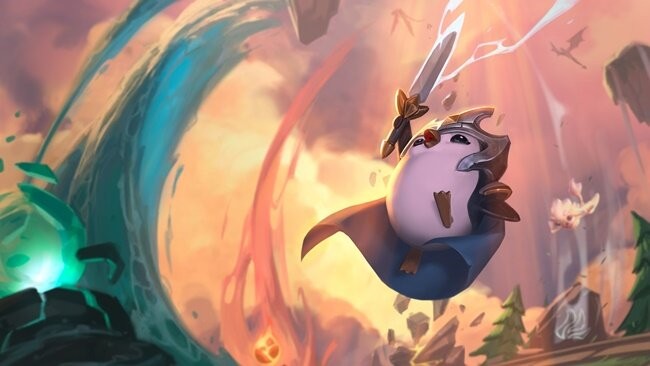
You’ve announced that TFT mobile will support PC cross play. In KR, a growing number of players have voiced concern about server stability since TFT’s launch. Is this because League and TFT is grouped together in a single client?
That’s a good question. Certainly when we were having troubles with Clash earlier last year, which is an extension of the LoL client, it made us rethink not just the technical aspects of its functionality, but also how it could be better designed with player load in mind. We learned a lot from that experience and in many ways, it helped us identify how to best prepare for TFT Mobile’s launch. Players are right that as we operate League and TFT, server stability is something we have to think about, regardless of whether the games operate in a single client or not. In anticipation of TFTM, we’ve been scaling all of our services to handle many more players, which is very exciting but also makes it all the more important to build for highly stable experience so players can continue to have 1a great experience, no matter what platform they play on.
5G, cloud streaming and AI are becoming more advanced day by day. Do you see these technologies being used to synergize with League IP in any way?
Definitely looking forward to 5G becoming more widespread globally as we’re openly pursuing multiple competitive mobile games for players to enjoy. I can’t speak to cloud streaming and AI, but generally I’m excited for games and technology to keep progressing hand in hand and open to the possibility that we may want to participate if we see a clear opportunity.

League has been the de facto best game of the past decade. What will it become in the next 10 years?
First off - thank you! That’s a huge honor coming from Inven.
The thing I’ve realized is that League is a lot of things to a lot of people, but there are a few key things that I hope we can accomplish in the next 10 years.
Be the dominant premier competitive game globally - we’re doing well here, but obviously we also have stiff competition. We want League to be the competitive game that all aspiring competitive players want to be a part of, sink their teeth into, find it the most rewarding to grow their mastery and strategy, find community and grow as a competitor. In order to do that, we must provide best-in-class service when it comes to all parts of League including our client, and we still have room to grow there. Thinking critically about the connective tissue from Iron to Pro is also on my mind, because hitting Iron, to Bronze, Silver, Gold, Plat, Diamond, Master, Grandmaster, Challenger matters because these are real, difficult and noteworthy achievements. Getting to Challenger means real stage play, in some of the biggest arenas in the world. Building out more of what that ecosystem to support that journey for more players - that would be really rewarding.
We want League to have the most resonant Champions and Skin fantasies like K/DA possible - League is full of larger-than-life characters we can connect with, and my hope is that we will over these next 10 years really build out our Champion pool, their abilities, their stories, their fantasies, in a way that makes them go from a pool to a real Champion cast.
Finally - we want to share the love of League everywhere. We want it easier for people to learn about League, play new League IP games and if they have a little courage, to join us in League! LoL requires real teamwork that I believe creates some of our most memorable gaming experiences in our lives. My hope is that we can share that with more and more people, so everyone can find their favorite League Champions, have fun at the PC Bang with their friends, cheer for their favorite teams and maybe - get cheered on themselves. Thanks so much Inven, and to our players, for giving me the time. Season 2020 fighting!
-

-

Striving for perfection to achieve excellence in esports
Sort by:
Comments :0

